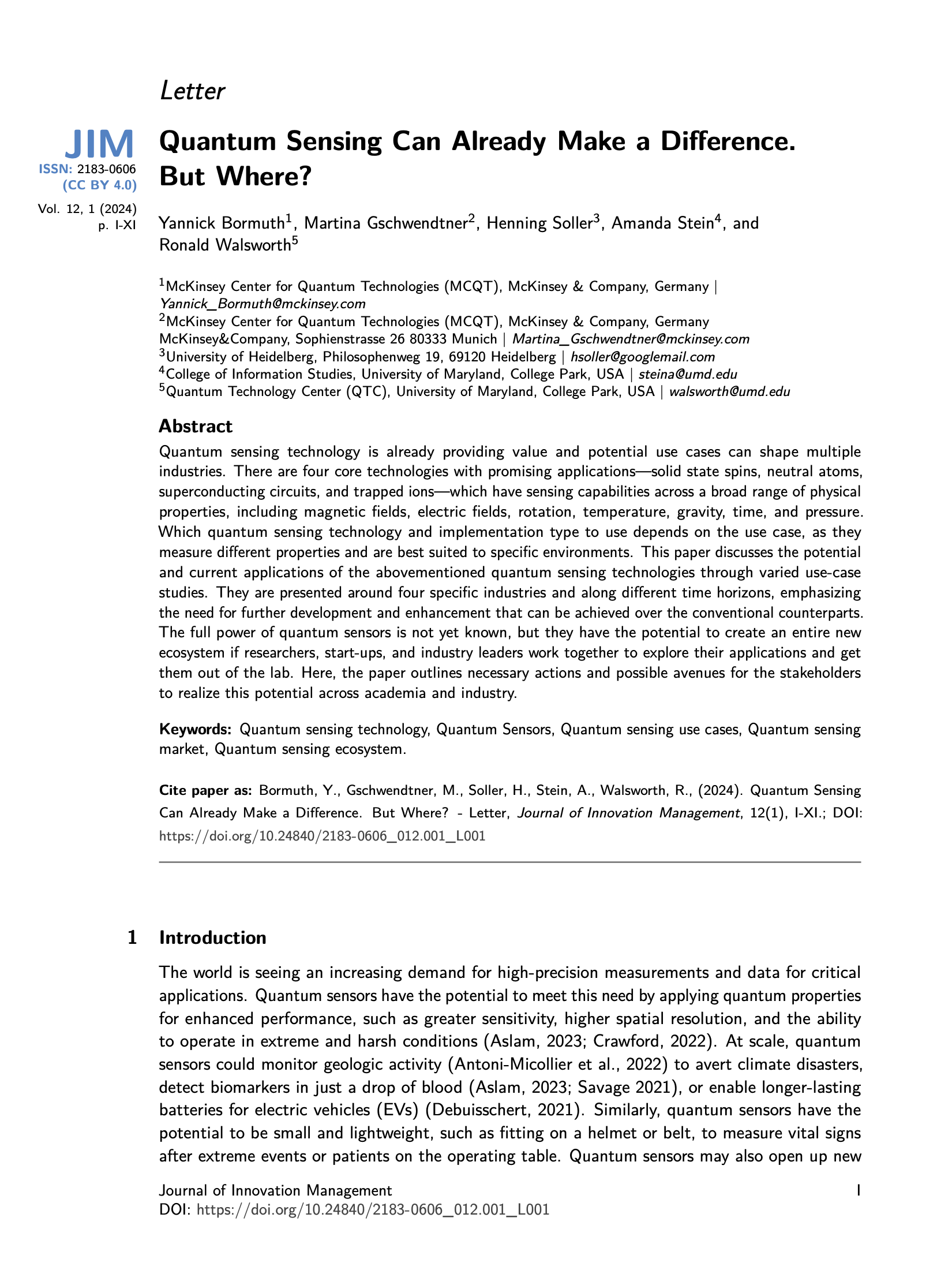Quantum Sensing Can Already Make a Difference. But Where?
Main Article Content
Abstract
Quantum sensing technology is already providing value and potential use cases can shape multiple industries. There are four core technologies with promising applications - solid state spins, neutral atoms, superconducting circuits, and trapped ions - which have sensing capabilities across a broad range of physical properties, including magnetic fields, electric fields, rotation, temperature, gravity, time, and pressure. Which quantum sensing technology and implementation type to use depends on the use case, as they measure different properties and are best suited to specific environments. This paper discusses the potential and current applications of the abovementioned quantum sensing technologies through varied use-case studies. They are presented around four specific industries and along different time horizons, emphasizing the need for further development and enhancement that can be achieved over the conventional counterparts. The full power of quantum sensors is not yet known, but they have the potential to create an entire new ecosystem if researchers, start-ups, and industry leaders work together to explore their applications and get them out of the lab. Here, the paper outlines necessary actions and possible avenues for the stakeholders to realize this potential across academia and industry.
Article Details
Authors who publish with this journal agree to the following terms:
- Authors retain copyright and grant the journal right of first publication with the work simultaneously licensed under a Creative Commons Attribution License that allows others to share the work with an acknowledgement of the work's authorship and initial publication in this journal.
- Authors are able to enter into separate, additional contractual arrangements for the non-exclusive distribution of the journal's published version of the work (e.g., post it to an institutional repository or publish it in a book), with an acknowledgement of its initial publication in this journal.
- Authors are permitted and encouraged to post their work online (e.g., in institutional repositories or on their website) prior to and during the submission process, as it can lead to productive exchanges, as well as earlier and greater citation of published work (See The Effect of Open Access).

